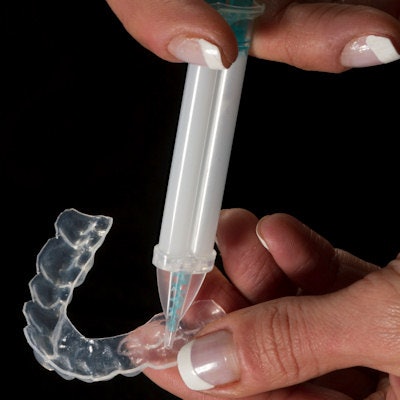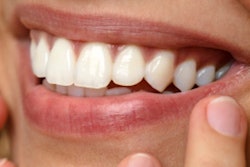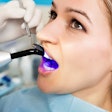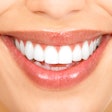
Patients spend billions each year on at-home whitening procedures. But are these products effective at changing the color of patients' teeth, and do they have a positive effect on their quality of life? Researchers conducted a study with nearly 60 patients to test one brand's effectiveness and impact.
They reported that the treatment was effective in both changing the color of patients' teeth and positively affecting patients' quality of life. The study was published in BMC Oral Health (December 11, 2018).
"The at-home whitening procedure with carbamide peroxide 10% had a positive effect on patients' oral health-related quality of life, psychology, and aesthetic perception after one month postwhitening," wrote the authors, led by Cristian Bersezio, an assistant professor in the department of restorative dentistry at the University of Chile Faculty of Dentistry in Santiago.
Multiple factors
The effectiveness of whitening procedures is judged by the color change and also by patients' perception of the treatment's effectiveness. This perception may change over time and be influenced by the opinions of their close friends and associates, according to the study authors.
The researchers also noted that the FDI World Dental Federation's new definition of oral health includes the physical, mental, and psychosocial well-being of patients, which is why they included the patients' perception in this study.
Studies exploring patients' aesthetic self-perception and psychosocial effect of whitening in clinical literature are lacking, so the researchers worked with almost 60 patients to evaluate the effect of an at-home whitening procedure on their quality of life.
A total of 58 patients underwent whitening with 10% carbamide peroxide gel (Whiteness Perfect, FGM) for one hour a day for three weeks. The participants were given three surveys at three distinct times: before they began the process, one week after, and one month after the whitening procedure was completed.
The researchers measured oral health-related quality of life using the Oral Health Impact Profile - Esthetics survey and the psychosocial effect using the Psychosocial Impact of Dental Aesthetics Questionnaire (PIDAQ) survey, a 23-item questionnaire that measures dental self-confidence, social impact (potential problems in social situations due to a subjective perception of an unfavorable dental appearance), psychosocial impact (the feeling of inferiority or unhappiness when comparing oneself to others who have superior dental aesthetics), and aesthetic concern on a five-point scale.
They measured orofacial aesthetics using the Orofacial Esthetics Scale, an eight-question assessment that includes questions regarding the appearance of a patient's face, profile, mouth, tooth, alignment, tooth shape, tooth color, and gums, as well as an overall impression of the patient's orofacial aesthetics.
The team reported that the results from the Oral Health Impact Profile were significant when comparing the results from the initial baseline survey prior to the treatment with those one week (p < 0.001) and one month (p < 0.001) after whitening, meaning the whitening process was effective.
| Color change at different assessment points | |||
| Color change | Baseline vs. 3 weeks after bleaching (mean and SD) | Baseline vs. 1 week after bleaching (mean and SD) | Baseline vs. 1 month after bleaching (mean and SD) |
| Shade guide units change | 2.7 ± 1.5 | 2.6 ± 1.6 | 2.4 ± 1.7 |
| Objective color change | 6.4 ± 3.4 | 5.9 ± 1.9 | 5.9 ± 1.8 |
The researchers measured the scores from the PIDAQ at two intervals, one week after whitening and one month after whitening. They found that the results for all four factors of dental self-confidence, social and psychosocial impact, and aesthetic concern were statistically significant (p < 0.03) after one week, and results of the factors after one month also were statistically significant (p < 0.001), except for social impact.
The participants experienced a positive effect of whitening (aesthetic concern) until the one-month recall, the study authors reported. The whitening also had a positive influence on patients' psychosocial impact, they noted.
Self-confidence scores remained positive during the recall period. Social impact also showed a positive effect one week after whitening.
| PIDAQ scores after whitening | |||
| Factor | Baseline (mean and SD) | 1 week after whitening (mean and SD) | 1 month after whitening (mean and SD) |
| Aesthetic concern | 7.2 ± 4.1 | 5.8 ± 3.1 | 6.0 ± 3.1 |
| Psychological impact | 16.0 ± 5.2 | 14.7 ± 5.6 | 14.1 ± 5.6 |
| Self-confidence | 18.7 ± 5.5 | 21.3 ± 6.1 | 22.1 ± 5.4 |
| Social impact | 16.8 ± 7.5 | 15.5 ± 7.1 | Not statistically significant |
In addition, the researchers found that just over half of the 58 participants reported pain at least once during whitening. The absolute risk of sensitivity was 51.7% (95% confidence interval). In general, however, the tooth sensitivity was mild, with a mean intensity of 0.8 ± 1.2 by the visual analog scale.
Patient participation a question
The researchers noted that the questionnaires required the patients to be alert and respond to a relatively large number of questions. It is possible that patients were not invested in the process or simply had no interest in responding, which may have influenced the results. However, these questionnaires are widely used and have been validated by the scientific community, they pointed out.
The authors recommended further study on the issue but concluded that the at-home whitening procedure had a lasting and significant impact for patients.
"The short-term effect of whitening generates an aesthetic perception that is sharper and deeper over time than immediately after the treatment," they concluded.



















